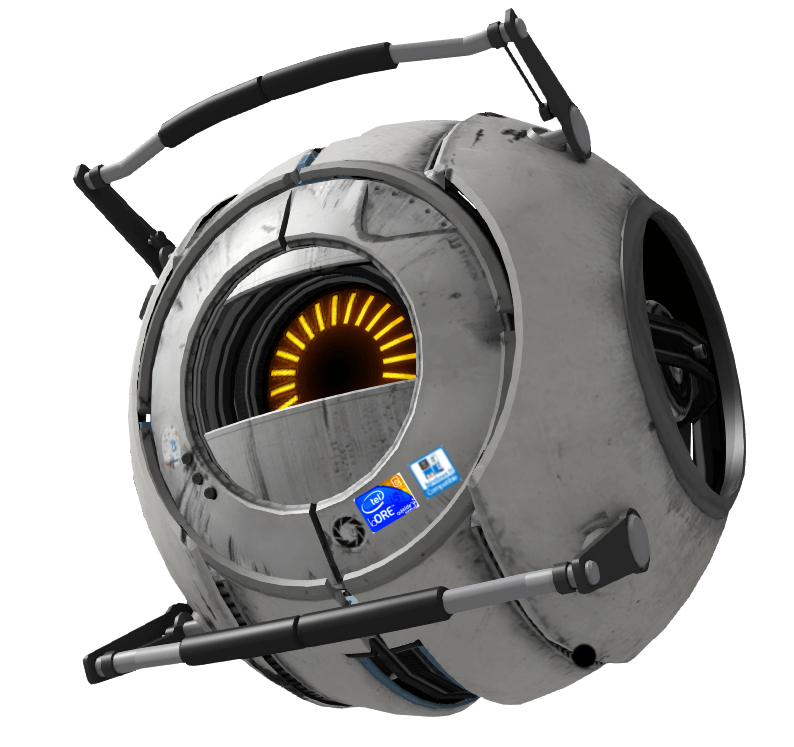Single core, 32 bit CPU, can’t even do video playback on VLC. But it kinda works for some offline work, like text editing, and even emulation through zsnes! It’s crazy how Linux keeps old hardware like this running.
Thankfully though, this laptop CPU is upgradable, and so is the ram, so I’m planning on revitalizing and bringing this old Itautec to the 21st century 😄
I’m planning on revitalizing and bringing this old Itautec to the 21st century
I think it was born in the 21st century? From this it looks like the first Celeron M was in 2004, and the first at that clockspeed was 2005.
Also, 2GB of RAM is plenty for many purposes - that’s more than any Raspberry Pi before the Pi 4 had!
Actually… You’re right about the 21st century lmao. I just wanted an excuse to quote Metal Gear Solid
Also, the issue is not ram itself, of course, 2GB is enough for lots of fun on Linux, it’s the CPU that’s killing me
Whilst the Celeron was indeed utter cack, 2 GB has me making four Yorkshiremen-style “2GB? Luxury!” style comments.
I used to run Ubuntu on my Acer Aspire 1362 WMLi back in 2005. I had 512 MB of RAM and a 2800+ Sempron processor.
That said, looking at this:
https://www.cpubenchmark.net/compare/1351vs710/Mobile-AMD-Sempron-2800+-vs-Intel-Celeron-M-1.60GHzMy old Sempron was a better CPU than that piece of junk Celeron you’ve got there. Giving it 2GB of RAM is hilarious!
Ikr? Makes me wonder what that celeron was meant for? It barely ran the Win 7 that came preinstalled. That’s why I’m so happy to see it run modern Debian with modern packages. Also why I’m doing some research on CPUs to upgrade it to
I assume it was made to upsell people to better CPUs. Celerons have always been awful.
That said, if Win7 came preinstalled then we’re talking about different eras of Celeron, at least, I cannot imagine it would be as mediocre as a low-mid AMD CPU from 2004!
I always think of an ex of mine defending criticism of her craptop. “It was good for its time!” No, no it wasn’t. It was built around a Celeron. It was built to be trash. It was ewaste with extra steps.
i started using linux on a single core pentium 4 with 384M of ram
Man, does 384 sound weird!
I know it was a 256 MB and a 128 MB stick… but it was a long time ago…
I was 14 years old, and I got the 128meg stick for free. Beggars can’t be choosers haha
brazil mentioned! does itautec still makes pc’s?
Not sure, but this one is a 2007 piece of art
Those are better specs than what I used throughout college (an Asus Eee PC running Debian with Xfce and Openbox). Not a powerful machine, but I absolutely loved that thing.
And Xfce4 doing the
lightheavy lifting as usual.itautec
reproduto(…)
points Brazilian
I had slackware on my 386DX 40. 4mb ram. It was kinda short-lived. I never got my modem working. I got a book, paged thought it. Learning shit was hard in the 90’s Internet.
Similar story but I just installed slackware on one of the University PCs (they just had a handful of PCs in the general computer room for the students and nobody actually watched over us) since I did not have a PC yet (only had a ZX Spectrum at the timback then).
Trying to get X-Windows to work in Slackware was interesting, to say the least: back then you had to manually create your own video timings configuration file to get the graphics to work - which means defining the video mode at the very low level, such as configuring the number of video clock cycles between end-of-line-drawing and horizontal-retrace - and fortunatelly I didn’t actually blow up any monitor (which was possible if you did the configuration wrong).
At least we had some access to the Internet (most things were blocked but we had Usenet and e-email and one could use FTPmail gateways to download stuff from remote servers) via Ethernet, so that part was easy.
Anyways, my first reaction looking at the OP’s post was like: yeah, if they’re running X it’s probably a too powerfull machine.
My favorite part of the first configuration of x back then, you screw with the conf for ages, manage to get a viable video mode set, startx for the billionth time… gray screen, mouse cursor… Overflowingly happy… Wait, now what? No program manager, no apps, no terminal, No exit, no shutdown. What’s a window manager? The least apparent thing in the world being to switch consoles , export a display variable, and start an xtern in the video console.
We worked so hard for every little thing.
Yeah, but at least we knew how to switch consoles.
I bet that most Linux users nowadays don’t event know the CTRL+ALT+Fx shortcuts to switch console.
Can’t say that the old days were really “good” compared to what we had now, but there was definitelly a lot of satisfaction in step by step getting the system to work.
Oh God no, You’re 100% correct on all that. We were living through endorphins and we now have something in between nostalgia and Stockholm syndrome for the old days.
I got my modem working in Slackware in 1997 - but the PPP driver (equivalent of WinSock - which worked in Windows quite well at the time) would only work during the first boot of the system. After a reboot, PPP would never return, and the best I got out of the internet about it at the time (mostly using my Windows PC) was “real men connect to the internet through ethernet.”
Between that an the useless (unless you enjoy frustration) sound drivers, I declared Linux “not ready for prime time,” and left it to others until starting back in via Cygwin in 2003, then Gentoo (for 64 bit access you couldn’t get any other way) in 2005.
Yeah I did another couple of false starts over the next couple of years. This time at different jobs. I finally made friends with Redhat on a laptop with Enlightenment WM. I managed to stay Linux in the desktop for the next 14 years. KDE, Gnome , switch to Ubuntu when Red hat decided to go and split out the door, went back to Fedora when Cannocial had their bad boy phase. OSX lured me away and 2015 I think it was. Super disappointed with the level of control I had over the OS, I went back to Windows for WSL. Continued* on that until Debian got their shit back together (nonfree). Eventually slid into NixOS, I don’t know if it’s as painful as slack where I was but it certainly feels like it, and I kind of missed that.
I did OS-X for my MacBookPro daily driver 2006-2008 (said premium laptop dying because of mis-applied thermal paste by the factory) - and started using a bit of Debian and RedHat at the time… my observation was, and still is: they all suck, but in different ways. If you value stability and control, there’s no comparison to the open source model. Windows used to have the edge for hardware support, but that has eroded to the point that we had selected a WiFi card for our Linux system this year, but we’re having to change now that we’re moving to Win11 - no Windows drivers for that M.2 WiFi/BT card.
I rushed to the comments when I saw a 1.6ghz CPU being called low end but I see OPs already been dealt with. I remember the first ever 1ghz CPU being an overclocked nitrogen cooled AMD Athlon. Me and my mates were all talking about it when it happened.
But why would a 1.6 ghz, single core CPU not be low end in 2025? Perfomance itself is very sluggish, and it has only been able to do very simple offline tasks for now. Yeah, yeah, many people used to run 512mb ram and 500mhz cpu setups… But that was in 2000 and whatever.
But why would a 1.6 ghz, single core CPU not be low end in 2025? Perfomance itself is very sluggish, and it has only been able to do very simple offline tasks for now. Yeah, yeah, many people used to run 512mb ram and 500mhz cpu setups… But that was in 2000 and whatever.
The post title says “ever” rather than “2025”. It’s cool for 2025 and we may get some interesting others, but many here will have ran it on something slower at some point.
Yes, the title say lowest I ever ran That was the lowest for me, I really don’t get the confusion. And even then, a celeron m 380 was lower end even for it’s own time
I have a 2001 compaq n600 still being used from time to time as a gateway for old tech as it has COM as well as LPT and analog video outs. It has 1.2ghz celeron, 512mb ram, 30 gig drive. Thing is kind of a beast for its time as my own desktop at that time was nowhere close to its spects. Thing was gifted to me after initially being given to install win7 on it. After telling the guy that this isnt going to happen and the best they couldd hope for is winxp and even then it’d struggle, they told me “oh, so linux is the only option then… well, it doesnt work for me. Have it, then, have fun with it!”. I put ubuntu on it, but still gnome ground the poor cpu to a halt, so I had to switch to Xfce. Luckily it turned good enough not to downgrade further to things like bare X or Kolibri OS. Worked as a solitaire machine for my dad for a few years, helped me fix and set up stuff on a few occasions, but nowadays mostly collecting dust in my drawer.
the theme tricked me into thinking this is Cinnamon
I got the icons and themes directly from a Mint install on another machine (cause I couldnt find these online) 😁
I am pretty sure it’s in mint-artwork package
Is it avaiable on debian repos?
There is a deb
Pretty sure my dad’s secondary desktop I used for my first Linux install had a 1.2 GHz Duron or something and 512 MB. I’m pretty sure I got that funky compiz fusion 3D-cube desktop running on there 😅
ITT: The Four Yorkshiremen Sketch.
If Minix counts, I got it running on a 286 some years ago. I don’t remember how much RAM it had, but it was very little.
Are you using systemd? Because 317 MB of RAM is really low for a normal Debian installation with XFce. At my mom’s 2 GB ram laptop, it uses 850 MB on a cold boot.
850 sounds crazy. maybe you forgot to subtract cached memory?
I’m telling you what htop reports.
It is because it is 32 bit. You can run a 32 bit distro on your machine too if you really want.
You can get a full Trinity desktop on Q4OS in 130 MB of RAM (32 bit edition).
I don’t think the difference between 32bit and 64bit is 2x in memory sizes, it’s way less than that. I run Q4OS, it runs at 350 MBs here.
Are you running Trinity or KDE?
Not sure why I get so much less unless it is that. Or are you saying you run Trinity 64 bit?
I agree that 32 bit is not often going to be 50% less in practice. Sometimes I think we should be running 64 bit kernels with 32 bit userland.
Trinity of course. That’s the point of low end computing with Q4OS. :)
Thanks, I feel a lot better about my potato-grade laptop now 😁






